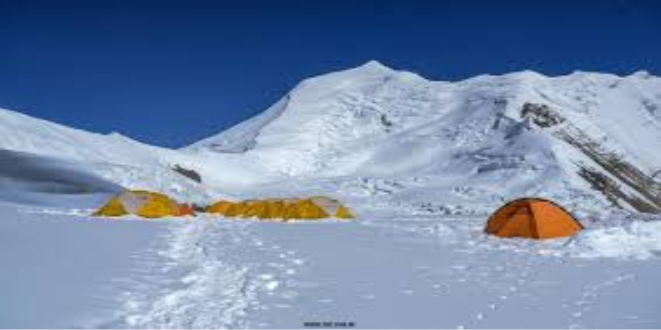Nestled in the remote Manaslu region of Nepal, Himlung Himal stands as a magnificent 7,126-meter peak that offers mountaineers a perfect blend of challenge and accessibility. Less frequented than its famous neighbors yet equally rewarding, this mountain presents an ideal objective for climbers seeking to venture beyond 7,000 meters without the crowds and extreme technical difficulties of more prominent Himalayan peaks.
The Mountain’s Character
Himlung Himal Expedition sits in the transition zone between the arid Tibetan plateau to the north and the lush valleys of Nepal to the south. This geographical positioning creates a unique microclimate that typically offers more stable weather conditions than many other Himalayan peaks. The mountain was first summited in 1992 by a Japanese expedition, but remained relatively unknown to the broader climbing community until the early 2000s.
What makes Himlung particularly appealing is its balanced nature. While classified as a challenging climb requiring solid mountaineering skills, it lacks the extreme technical sections found on peaks like Ama Dablam or the sheer altitude challenges of the 8,000ers. Its normal route follows the northwest face, presenting a combination of moderate snow slopes and short technical sections that make it perfect for climbers looking to gain high-altitude experience.
Journey to Base Camp
The approach to Himlung Himal is an adventure in itself. Most expeditions begin in Kathmandu, followed by a scenic drive to Besisahar, the traditional starting point of the Annapurna Circuit. From there, the trek follows the Marsyangdi Valley before diverting northeast toward the Phu Valley. This path takes climbers through diverse ecosystems and traditional Tibetan-influenced villages that have remained largely unchanged for centuries.
The trekking portion typically takes 6-7 days, allowing for proper acclimatization while passing through villages like Koto, Meta, and finally reaching Phu, the last settlement before base camp. The cultural experience along this route is particularly enriching as trekkers encounter monasteries, mani walls, and the warm hospitality of the local Gurung and Tibetan people.
Base camp is established at approximately 4,900 meters in a glacial valley beneath the mountain’s northwest face. The location offers spectacular views not only of Himlung but also of neighboring peaks like Gyaji Kang and Himjung.
The Climbing Route
The standard route on Himlung Himal involves establishing three camps above base camp:
- Camp 1 (5,450m): Positioned on a relatively flat section after navigating through an icefall section. This camp requires careful route-finding to avoid crevasses.
- Camp 2 (6,000m): Located on a snow plateau, offering magnificent views of the surrounding mountains including distant Annapurna and Manaslu ranges.
- Camp 3 (6,350m): The highest camp, situated on a shoulder that provides direct access to the summit ridge.
The climbing is predominantly on snow and ice, with slopes ranging from 30 to 50 degrees. The final summit day involves a long ridge climb with occasional steep sections requiring fixed ropes. While not extremely technical, the combination of altitude and exposure demands respect and proper preparation.
Preparation and Requirements
A successful Himlung expedition requires thorough preparation. Climbers should have previous experience at altitudes above 5,500 meters and be comfortable with basic snow and ice climbing techniques. Familiarity with fixed rope techniques, cramponing on steep snow, and self-arrest methods is essential.
Physical conditioning cannot be overemphasized. The expedition typically spans 25-30 days total, with multiple load carries between camps and the physical challenges of high-altitude living. A comprehensive training program focusing on cardiovascular endurance, strength, and mental resilience should begin at least six months before the expedition.
Equipment requirements include standard high-altitude mountaineering gear: a four-season tent, expedition down suit, double plastic boots, crampons, ice axe, harness, and a sleeping system rated for extreme conditions. Most commercial expeditions provide group equipment like fixed ropes, cooking gear, and high-altitude food.
Seasonal Considerations
Himlung Himal can be climbed in both pre-monsoon (spring) and post-monsoon (autumn) seasons, each offering distinct advantages:
Spring (April-May): Generally offers more stable weather patterns with consistent, if gradually warming, temperatures. Snow conditions are typically more reliable, and the days grow longer as the season progresses. The landscape comes alive with rhododendron blooms at lower elevations.
Autumn (September-October): Features clearer air and spectacular visibility after the monsoon has cleared dust from the atmosphere. Temperatures are gradually cooling, and the stable weather window can extend well into November. The cultural bonus in autumn is the possibility of witnessing festivals like Dashain or Tihar during the trek.
Cultural Context
An expedition to Himlung Himal offers more than just climbing. The mountain sits in a region rich with Tibetan Buddhist culture. The ancient village of Phu, with its centuries-old monastery and traditional stone houses, provides insight into a way of life that has remained largely unchanged despite modern influences elsewhere.
Many expeditions incorporate cultural respect into their climbing practice, participating in puja ceremonies (blessing rituals) before ascending the mountain. These ceremonies, led by local lamas, seek permission from the mountain deities and blessing for safe passage—a beautiful synthesis of mountaineering objectives and cultural respect.
Environmental Responsibility
With increasing awareness of human impact on fragile mountain ecosystems, responsible expeditions to Himlung emphasize leave-no-trace principles. This includes proper waste management systems, including human waste removal from higher camps, minimizing packaging, and ensuring all equipment is brought back down.
The region around Himlung falls within the Annapurna Conservation Area, where sustainable tourism practices are encouraged to preserve both the natural environment and the cultural heritage of local communities.
Conclusion
The Himlung Himal expedition represents a perfect intermediate step for mountaineers looking to transition from lower trekking peaks to the challenges of high-altitude mountaineering. Its combination of reasonable technical difficulty, stunning location, and rich cultural context makes it more than just a climbing objective—it’s a holistic Himalayan experience.
Whether you’re drawn by the physical challenge, the breathtaking landscapes, or the opportunity to experience traditional Himalayan culture, Himlung offers rewards that extend far beyond the summit. The mountain teaches patience, resilience, and respect for nature’s power—lessons that remain long after the expedition concludes.
For those willing to venture beyond the more famous Himalayan peaks, Himlung Himal provides a genuine adventure that balances challenge with accessibility, all while treading a path less traveled through one of the world’s most spectacular mountain regions.

